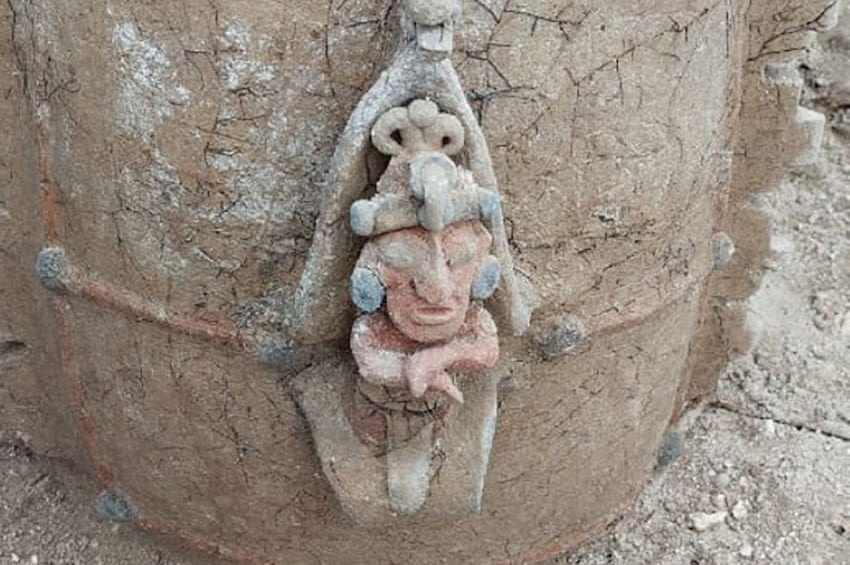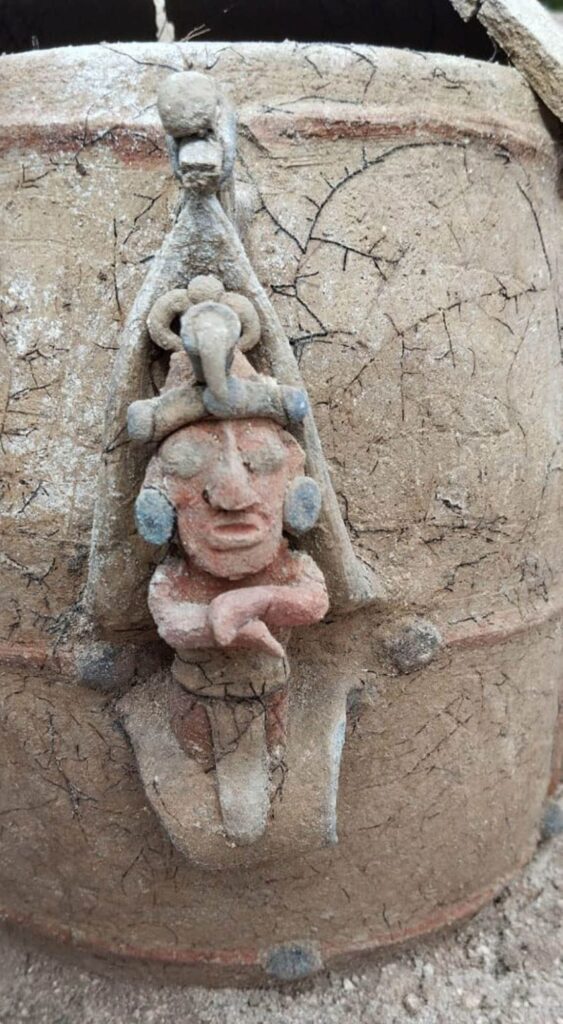Funerary urn depicting Maya corn god uncovered during Maya Train work

Archaeologists from the National Institute of Anthropology and History (INAH) conducting salvage work along Section 7 of the Maya Train discovered a funerary urn with a carved image of a corn god.
According to a press announcement by INAH, the general director of INAH, Diego Prieto Hernández, said that, in terms of its typology, this urn has been identified as a Paaktzatz-style vessel.
The funerary urn “presents a very interesting image of the corn god emerging from the leaves of a cob,” Hernández said.
According to Prieto Hernández, the urn was found near a similar vessel, which may indicate that the vessels were part of an ancient offering. Due to its typology, the clay pot has been identified as a Paaktzatz-style urn, containing human remains.
An anthropomorphic pastillage figure depicting the Maya corn god is seen on the funerary urn, according to a press release, and an owl is depicted on the lid, which is also present on the other vessel.

On the front of the vessel is a small anthropomorphic figure made of pastillage (a decorative technique using pieces of ceramic paste), alluding to the deity’s representation as an ear of corn in the growth stage.
In addition to the depiction of the corn god, the urn has ornamentation resembling the Mayan symbol “ik,” which represents wind and divine breath.
The ornamentation of the second vessel consists of applications on the sides, which simulate the thorns of a ceiba tree, a sacred tree among the Mayans of the past and present.
Archaeologists stated that similar images of the Maya deity have been found in figurines from the island of Jaina, in Campeche.
During the Classic Period of Maya iconography, the owl was considered an omen and a symbol of war. Paaktzatz vessels from the Río Bec region of Campeche, crafted between 680 and 770 A.D., provide evidence of this.
Archaeologists, archaeological work done through Jan. 8 on sections 5, 6 and 7 of the Maya Train has uncovered and protected 40,000 archaeological sites, some 1,000 artifacts, over 200,000 ceramic fragments, and 148 human burials.